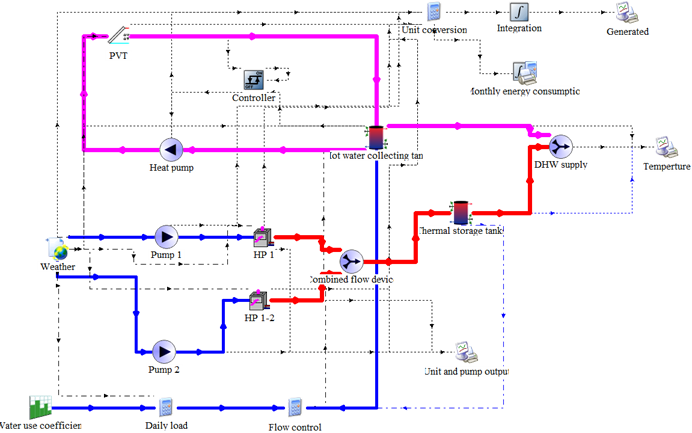Scientists in China have designed a photovoltaic thermal integrated air source heat pump hot water system that uses a phase change tank to lower energy consumption and achieve higher food performance than conventional heat pumps. The system is designed to use water as a work medium and to offer circulation power for forced circulation.
A research team of the Zhongyuan University of Technology in China has a New type of photovoltaic/thermal integrated air heat heat pump (PVT-Sashp) hot water system in combination with a phase change material (PCM) tank that is reportedly improves the heat sensitivity and stability of the system.
“Our system has lower Energy consumption and improved electricity generation compared to conventional heat pumps, ”said the main author of the research, Fang Wang, said PV -MagazineNote that the proposed system could be particularly suitable for limited residential buildings. “Moreover, the annual value of the extensive costs of the system is reduced by 24.02% compared to the traditional system, with lower operating costs and better economic benefits and long -term stable operation can maintain under different climatic conditions.”
PCMS absorb, store and release large amounts of latent heat over defined temperature ranges. They are often used at research level for PV module cooling And the storage of heat.
In their simulations, the scientists assumed that the system would use water as a work medium and to offer circulation power for forced circulation. Moreover, they assumed that the hot water in the hot water collection tank and the PCM tank is evenly mixed, and the water temperature in the water tank is uniform without temperature difference and stratification.
“To reduce the heat loss caused by mixing hot and cold water, a layered water tank without an internal heating device is used for the heat collection tank,” they explained further. “The water tank is divided into six layers from top to bottom and the water temperature of each layer is evenly distributed.”
As far as the tank is concerned, they explained that heat flows in and out via two separate liquid flows, where one of the liquids is mixed with the storage fluid and the other carries out the heat transfer via an immersion heat exchanger.
With the help of the orthogonal experiment method and range analysis method, the research group carried out a technical and economic analysis of system performance and discovered that it could reach a performance coefficient (COP) of 3.92, which is supposedly 18.07% higher than that of Traditionally wise heat storage systemS.
“The system turned out The optimum combination of important parameters that influence system performance, such as the volume of hot water collection, PVT collection area, slope and circulating electricity, ”Wang emphasized.
“The extensive efficiency of the system can reach 76.28% under the optimum combination,” he said. “It significantly reduces energy consumption and improves the performance of electricity generation. In addition, the annual value of the extensive costs of the system is reduced by 24.02% compared to the traditional system, with lower operating costs and better economic benefits and can maintain stable long -term operation under different climatic conditions. “
The analysis also showed that the amount of household hot water supplied by the PCM tank is proportional to the volume of the hot water tank, which means that it decreases with the increase in the PVT area and the circulating current speed. “The temperature of the water supply increases with the increase in the PVT area and decreases with the increase in circulating flow speed and the tank volume. The temperature of the water supply first increases and then decreases with the increase in the installation corner, ”the scientists emphasized.
The proposed system was described in the study “Photovoltaic/Thermal integrated air heat heat pump Hot water tank with phase change tank“Published in Renewable energy“
This content is protected by copyright and may not be reused. If you want to work with us and reuse part of our content, please contact: editors@pv-magazine.com.


